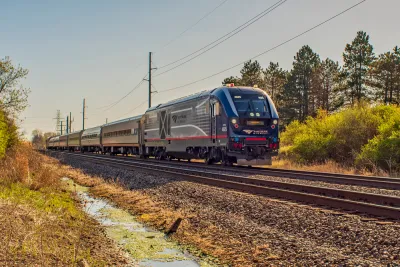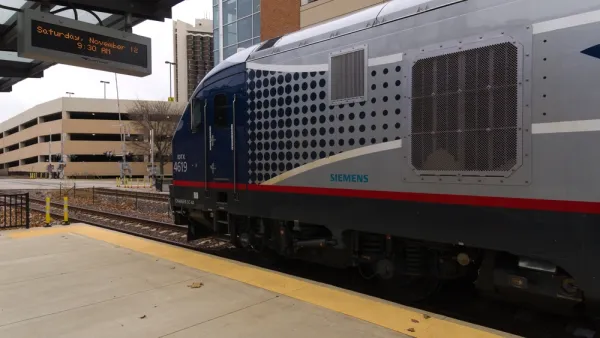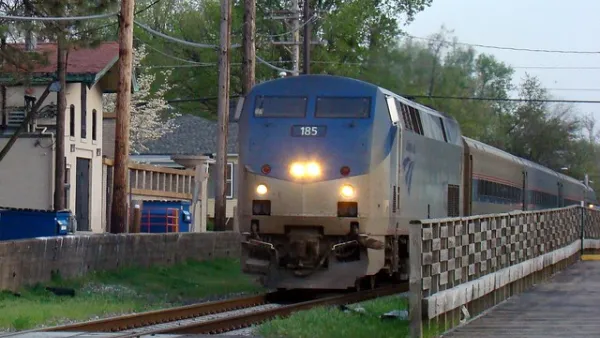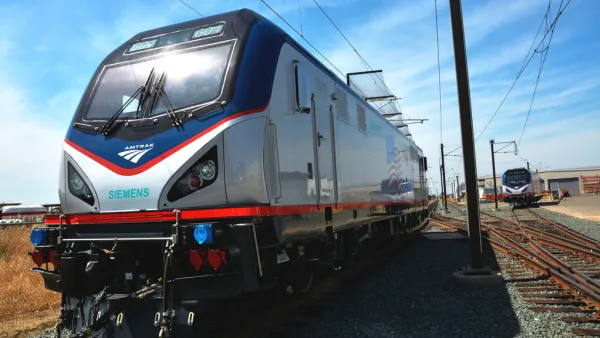A project that won funding from federal stimulus programs during the Obama administration is finally paying off on the Amtrak route between Chicago and St. Louis.

Amtrak trains traveling between St. Louis and Chicago can now reach speeds of 90 miles per hour, thanks to new brakes installed after three years of delays.
According to an article reporting the news by Mark Schlinkmann for the St. Louis Post-Dispatch, the new top speeds are one step closer to a final goal of top speeds of 110 miles per hour, which is expected in another year and half. The new top speed trims 15 minutes off the 284-mile journey.
The new top speeds were delayed after the 2017 completion date due to a "longer-than-expected process of installing and testing new GPS-related safety technology — called positive train control," adds Schlinkmann.
"The changes are part of a $1.95 billion upgrade of the St. Louis-Chicago corridor that was mostly finished in 2017," according to Schlinkmann. "The project, largely funded by federal economic stimulus dollars allotted under then-President Barack Obama, included new rails and concrete ties, new Amtrak stations in Alton and elsewhere and improved crossing gates to keep vehicles from weaving around crossing bars."
Planetizen picked up the news of the high speed rail funding that included the Chicago-to-St. Louis improvements in 2010.
FULL STORY: Trains on Amtrak’s St. Louis-Chicago route now running at up to 90 mph

National Parks Layoffs Will Cause Communities to Lose Billions
Thousands of essential park workers were laid off this week, just before the busy spring break season.

Retro-silient?: America’s First “Eco-burb,” The Woodlands Turns 50
A master-planned community north of Houston offers lessons on green infrastructure and resilient design, but falls short of its founder’s lofty affordability and walkability goals.

Delivering for America Plan Will Downgrade Mail Service in at Least 49.5 Percent of Zip Codes
Republican and Democrat lawmakers criticize the plan for its disproportionate negative impact on rural communities.

Test News Post 1
This is a summary

Test News Headline 46
Test for the image on the front page.

Balancing Bombs and Butterflies: How the National Guard Protects a Rare Species
The National Guard at Fort Indiantown Gap uses GIS technology and land management strategies to balance military training with conservation efforts, ensuring the survival of the rare eastern regal fritillary butterfly.
Urban Design for Planners 1: Software Tools
This six-course series explores essential urban design concepts using open source software and equips planners with the tools they need to participate fully in the urban design process.
Planning for Universal Design
Learn the tools for implementing Universal Design in planning regulations.
EMC Planning Group, Inc.
Planetizen
Planetizen
Mpact (formerly Rail~Volution)
Great Falls Development Authority, Inc.
HUDs Office of Policy Development and Research
NYU Wagner Graduate School of Public Service





























